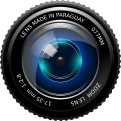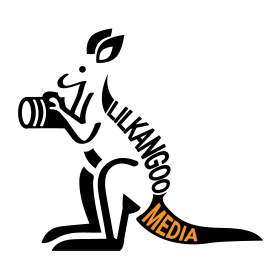ISO Settings
The camera's sensor's light sensitivity is determined by the ISO setting. You can find yourself in low light situations when photographing animals, such as early in the morning or late at night. A higher ISO setting may assist to brighten the image under these circumstances. However, a high ISO also makes the image noisier, which might reduce the quality of the image.
The optimal ISO setting for wildlife photography is between 400 and 1600. To reduce noise when the light is bright, you may lower the ISO setting; in low light, you can raise the ISO to catch more light.
Shutter Speed
The amount of time the camera's sensor is exposed to light is determined by the shutter speed. A quick shutter speed is perfect for photographing swiftly moving wildlife because it can stop motion and prevent blur. In contrast, a slow shutter speed can produce motion blur and record the animal's movement.
Shutter speeds between 1/500th and 1/1000th of a second are suggested while photographing wildlife to capture moving subjects like birds in flight. A shutter speed between 1/60th and 1/125th of a second is suitable for photographing animals that move slowly.
Aperture
The aperture is the hole in the camera lens where light enters to illuminate the sensor. A narrow depth of field is produced by a bigger aperture (lower f-number) which is perfect for separating the subject from the background. This is especially helpful for wildlife photography since it helps the subject seem more alone and natural.
It is advised to use an aperture between f/5.6 and f/8 while photographing wildlife. A excellent balance between depth of field and picture clarity is produced as a result. You may increase the aperture (lower the f-number) to get a deeper depth of field but doing so will make the image less crisp.
Autofocus Mode
For wildlife photography, the autofocus mode option is crucial since it controls how the camera focuses on the subject. Single-point autofocus and continuous autofocus are the two primary autofocus modes.
For immobile subjects single-point autofocus works best since it focuses on a single area of the frame. On the other hand, continuous autofocus is perfect for moving subjects since it continuously modifies the focus to maintain the subject in focus.
Continuous focusing is recommended for wildlife photography since it makes it simple to catch moving subjects.
White Balance
An option called white balance modifies the colours in your photos so that they appear more realistic. The colour temperature can change depending on the kind of illumination which can alter how the image appears as a whole.
The daylight white balance option produces the most accurate colours making it the ideal choice for wildlife photography. However you might need to modify the white balance if you're shooting in various lighting situations like early in the morning or late at night to get the ideal effect.
Conclusion
Wildlife photography is a challenging and rewarding hobby that requires patience and technical skills. With the right camera settings, you can capture stunning images of wild animals in their natural habitats. Understanding the importance of ISO, shutter speed, aperture, autofocus mode and white balance is crucial for achieving the best results in wildlife photography.
By using an ISO range of 400 to 1600, a shutter speed of 1/500th to 1/1000th of a second for fast-moving animals and 1/60th to 1/125th of a second for slow-moving animals, an aperture of f/5.6 to f/8, continuous autofocus and daylight white balance you will be well on your way to capturing beautiful and sharp images of wildlife.
It's also important to remember that the best camera settings will vary depending on the lighting conditions and the subject you're photographing. Experimenting with different settings and learning from your results is key to mastering the art of wildlife photography.
So get out there, find some wildlife and start capturing stunning images today!

